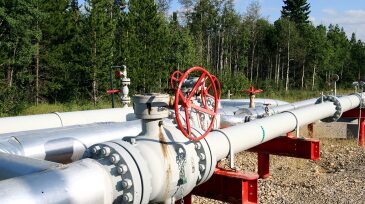Alberta
-
Regulatory uncertainty continues to hamper Canadian provinces in competition for hydrocarbon investment.
-
The Alberta government has announced a new liability management framework aimed at expediting the cleanup of orphan and inactive well sites, signaling a more active approach to reclamation and management of those sites.
-
The country’s once-thriving railway system has skidded to a stall, falling victim to low crude-oil prices, reduced demand, and government-imposed oil production cuts.
-
Its reward for years of struggling to adapt to low prices and weak demand for its oil and gas has been an epic crash. Canadians selling change say it is time to consider possibilities that seemed inconceivable in the past.
-
The Alberta Energy Regulator has suspended a wide array of environmental monitoring requirements for oilsands companies over public health concerns raised by the COVID-19 pandemic.
-
After years of negotiations, the province announced that it had reached a preliminary agreement with the federal government that it calls a “major step toward providing Alberta’s oil and gas industry a single set of strong rules to reduce methane emissions and protect the environment.”
-
Steam-assisted gravity drainage (SAGD) performance in bitumen-recovery projects in Alberta is affected by geological deposits, reservoir quality, and operational experience.
-
Alberta carbon conversion challenge yields potential GHG reduction of millions of metric tons per year.
-
The decision to ramp down production on the Aspen project comes months after the Alberta provincial government imposed production cuts to handle pipeline bottlenecks. Aspen is projected to produce 75,000 BOPD upon startup.
-
Imperial Oil has made a final investment decision on its 75,000-B/D Aspen oil sands project, the first new oil sands development to be approved in 5 years.










